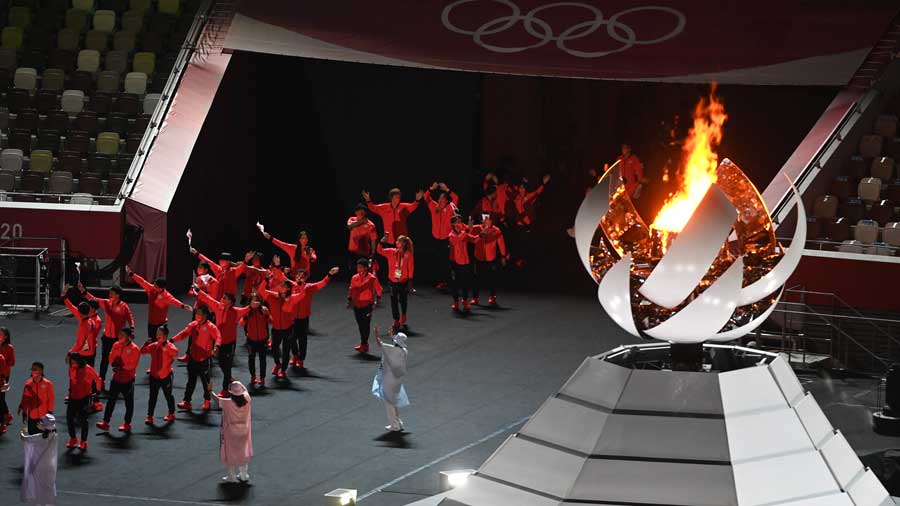When the acclaimed film-maker, Naomi Kawase, known for her lyrical film-making, was chosen to direct the official film of this edition of the Olympics, she said, “I hope to capture ‘time’ and take full advantage of the appeal of documentary films and their ability to freeze those moments into ‘eternity’, allowing the significance of the Tokyo 2020 Games to be communicated worldwide.” Little did she know that she would get the rare opportunity of capturing the Games during one of the most difficult periods in human history.
The Olympics are undoubtedly a celebration of pageantry, a feast of human drama. Interestingly, cinema and the modern Olympic movement were born around the same time in the same city, Paris. While the Lumière brothers presented the cinématographe to an audience in December 1895, Baron Pierre de Coubertin established the International Olympic Committee in June 1894. Subsequently, accomplished international film-makers such as Milos Forman, Kon Ichikawa, Claude Lelouch, Leni Riefenstahl and Carlos Saura used their passion and brilliance to capture the Olympics of their times.
Kawase follows in the footsteps of the legendary Japanese film-maker, Ichikawa, who was officially commissioned by the organizing committee and the Japanese government — after Akira Kurosawa had been dropped — to make the documentary of the 1964 Tokyo Games. Ichikawa not only followed athletes and events but also created a spectacle of the bittersweet reality of how Japan was becoming part of the modern world, erasing the past while building the future. Ichikawa’s film begins with the statement: “The Olympics are a symbol of human aspiration.” This is followed by a bright sun against a red sky and a wrecking ball demolishing old buildings in anticipation of the Games and Japan’s future. Ichikawa’s creation is a simultaneous epilogue of the celebration of victory and the solitude of defeat — a humane and honest account of the Games. It depicted the victorious moment when Bob Hayes won the 100-metres as well as Billy Mills’s astounding come-from-behind victory in the 10,000-metres. But Ichikawa’s coverage of the 10,000-metre final continued to follow the last man, Ranatunge Karunananda from Sri Lanka. Ichikawa closely followed Chad’s only competitor — the 800-metre-runner, Ahmed Issa — while he trained, ate, roamed the Olympic village, and visited around Tokyo, all alone. The film finished with the great Ethiopian runner, Abebe Bikila, winning the men’s marathon along with the pain and distress of the athletes trailing after him. Ichikawa went on to show new constructions demolished by the wrecking ball in a bomb-ruined block of Tokyo city. Ichikawa captured the triumph, passion and suffering of competition with a singular humanistic vision and eventually created lyrical, idiosyncratic poetry out of the athletic drama surging all around him.
Ichikawa’s impressionistic film won two Baftas, and is now regarded as one of the greatest sports films ever made. Like Leni Riefenstahl’s Olympia, which documented the 1936 Berlin Olympics, Ichikawa’s masterpiece is considered a cinematographic milestone which transformed the art of documentary film-making. But, it was disliked — possibly even hated — by the organizing committee. They wanted a straightforward, commemorative film — a narrative of Japan’s miraculous recovery. They, thus, edited Ichikawa’s footage to make another film, Sensation of the Century.
Naomi Kawase thus has a difficult job given the monumental legacy of Ichikawa. What kind of narrative would Kawase depict in her film? Would she risk portraying some naked truths in the organization of the Covid-edition of the Olympics? The Games being held amid an emergency has offered Kawase a unique opportunity to freeze some exceptional moments of this turning point in history.
Unfortunately, Kawase will not be able to draw on footage of crowds the way Ichikawa did. She planned to focus on some backstories, particularly of sportspersons who developed their careers as top athletes even after they had become mothers. This is certainly a unique vision in the context of a film on the Olympics. But, this alone might not make her film a classic. Kawase decided to capture the feelings of the medical workers and quarantine staff at the airport, who strove day and night to make the Games safe and secure. She even planned to relay the opinions of the people who were against organizing the Games amidst a pandemic. “I think it’s very important to keep both negative and positive feelings as the record of this period,” she said.
But how far would she go? Will Kawase portray the ‘emergency’ situation in Tokyo, the empty roads and, more importantly, the anger of 80 per cent of the Japanese people who were against the organization of such a sporting fiesta, which has made the Tokyo Games the most unwanted Games in history? Will an Olympic like no other eventually get a film like no other? Indeed, time has given Kawase a grand opportunity. We have to wait for the film’s release in early spring of 2022 to see what she has made of it.











